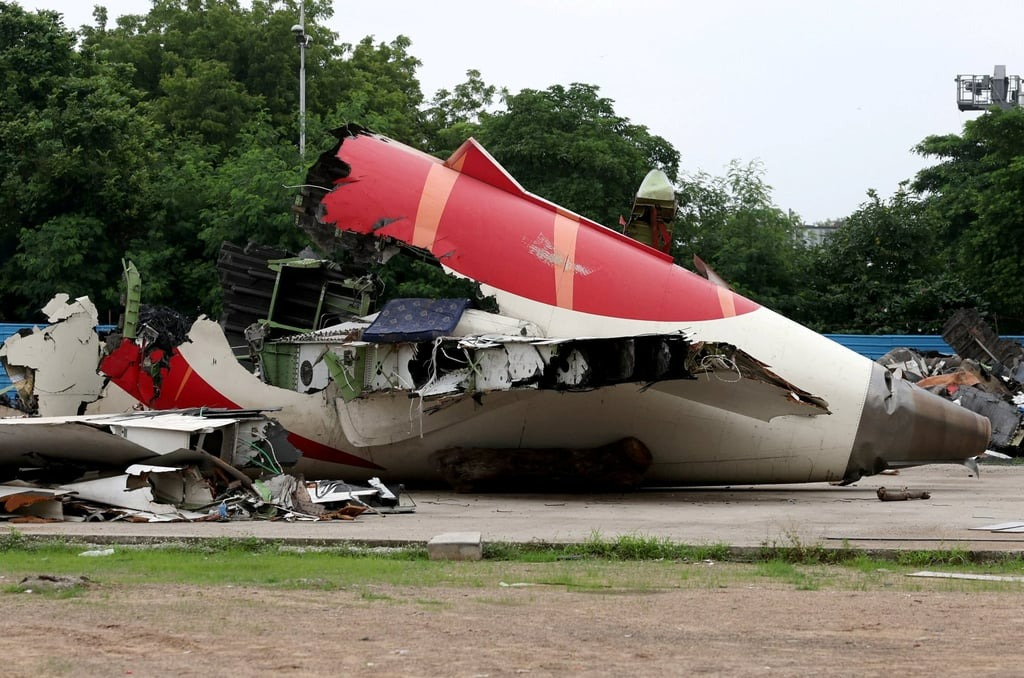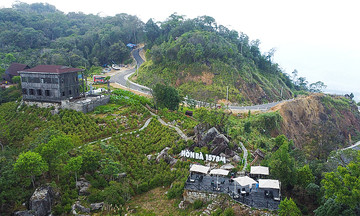When Michael Watson boarded an Air India Boeing 787 Dreamliner from New Delhi to Dubai in early June, he never imagined he would swear off the aircraft type forever. On 12/6, another Dreamliner belonging to the same airline crashed just 30 seconds after takeoff from Ahmedabad, killing 242 people on board and 19 on the ground.
Watson, a retired British teacher and a frequent flyer in Asia, said he will avoid the Boeing 787 entirely. "I have a bad feeling about them," he said, adding that he is prepared to pay more to fly with other airlines.
 |
Debris from the Air India Boeing 787-8 Dreamliner in Ahmedabad, India on 12/6. Photo: Reuters |
Debris from the Air India Boeing 787-8 Dreamliner in Ahmedabad, India on 12/6. Photo: Reuters
Watson is not alone. The 12/6 disaster, the first fatal accident involving a Boeing 787, has sparked concern among passengers across Asia, leading to a significant drop in bookings and a rise in anxiety. This is despite aviation authorities and experts maintaining that flying is still one of the safest modes of transportation.
According to Indian travel agencies, Air India saw new bookings drop by 30-35% in the week following the crash, with over 20% of existing bookings canceled. Cockpit Vista, a wellness center in Bengaluru, reported a surge in demand for its 500 USD therapy sessions designed to help passengers overcome their fear of flying. The center said it received over 100 inquiries after the disaster, compared to an average of 10 per month before.
Google Trends data shows that searches for the term "fear of flying" in India peaked the day after the crash and have remained high ever since. This incident was the culmination of several high-profile aviation incidents in Asia this year.
 |
An Air Busan aircraft caught fire on 29/1. Photo: Yonhap |
An Air Busan aircraft caught fire on 29/1. Photo: Yonhap
Last year, on 29/12, a Jeju Air plane crashed at Muan International Airport, South Korea, killing 179 people. Weeks later, an Air Busan flight from South Korea to Hong Kong caught fire, injuring seven. On 29/6, a Batik Air plane narrowly avoided skidding off the runway while landing in stormy weather near Jakarta.
The following day, a Japan Airlines flight from Shanghai to Tokyo lost over 8,000 meters in altitude within 10 minutes, before making an emergency landing in Osaka. Oxygen masks were deployed mid-air, and passengers panicked.
Further west, a January collision between an American Airlines plane and a US Army Black Hawk helicopter over the Potomac River in Washington resulted in 67 fatalities. Several smaller incidents involving helicopters and chartered flights were also reported in North America in the following months.
Despite these recent and notable incidents, aviation analysts emphasize that commercial flights remain extremely safe, especially compared to other forms of transport.
"We have seen some horrific accidents and incidents in the first half of this year, especially in North America," said Alvin Lie, the head of the Indonesian Aviation Consumer Service Association (IACSA). He emphasized that the number of air travel fatalities is still significantly lower than other modes of transport, especially road travel.
According to data from the Geneva-based Aircraft Crashes Record Office (ACRO), 54 accidents occurred in the first half of 2025, compared to 70 during the same period last year.
Lie suggested that the prevalence of social media has increased awareness and attention to aircraft safety, with incidents recorded from outside or inside the cabin often going viral on various platforms.
On a positive note, this can raise awareness and ensure better compliance with safety regulations by travelers, as well as stricter oversight from regulatory bodies. The Air India disaster and other accidents, while shocking, remain "statistical outliers in an industry that operates over 100,000 flights daily worldwide", according to Marco Chan, a former pilot and aviation lecturer at Buckinghamshire New University, UK.
According to the International Air Transport Association (IATA), the global accident rate in 2024 was 1.13 per million flights, lower than the five-year average of 1.25. The fatality risk of 0.06 last year was also lower than the five-year average of 0.1.
"To put it in perspective, on average, a person would have to fly every day for over 15,000 years to experience a fatal accident," Chan said.
While Air India and some North American airlines like Delta Air Lines and American Airlines reported a decrease in bookings, the global picture is more optimistic. IATA reported in May that global passenger demand increased by 5% compared to the same period last year.
According to Robert Bor, a clinical aviation psychologist in the UK, high-profile accidents can cause passenger anxiety but rarely lead to long-term behavioral changes. He said the fear of flying often stems from personal factors, such as claustrophobia or a feeling of loss of control.
Irsan Hermawan, a businessman in Medan, Indonesia, frequently flies the two-hour journey to Jakarta for work and to visit family. He said recent accidents have not affected his travel plans.
"It's normal, and I'm not afraid of any form of transportation," he said, emphasizing that if God has destined you to be safe, you will be safe, and vice versa. Therefore, he always maintains a relaxed attitude when flying.
Hoai Anh (SCMP)












